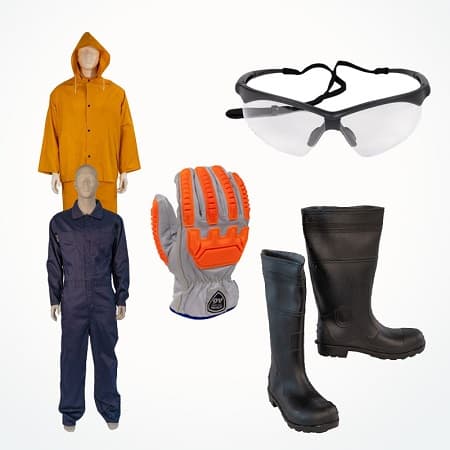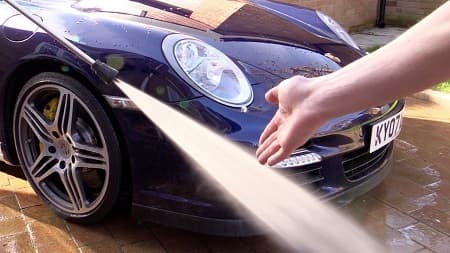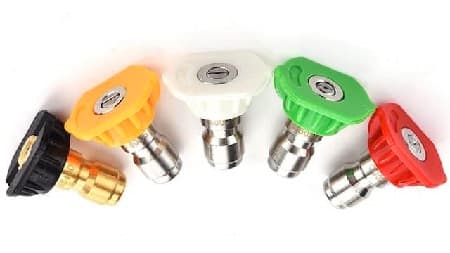Pressure washers are a great way to quickly and efficiently tackle a wide range of maintenance and cleaning tasks, from cleaning sidewalks and driveways to restoring wood decks. However, pressure washers can be dangerous if not used correctly. Pressure washers use a high-powered stream of water to remove dirt, grime, and other debris, and the force of the water stream can cause serious injury.
In this blog post, we will discuss some important pressure washer safety tips to keep in mind while using the machine. By following these safety tips, you can ensure that your pressure washing experience is safe and efficient. So let’s get started.
1. Read the Instruction Manual Carefully
Reading the instruction manual before using a pressure washer can help you understand how to properly operate the equipment and avoid accidents. The manual includes important safety information, such as the recommended protective gear to wear, how to handle chemicals safely, how to properly set up and connect the equipment, as well as how to select the appropriate nozzle for the job.
Knowing how to use the pressure washer properly will help you avoid accidents and injuries, such as spraying the high-pressure water at someone or damaging delicate surfaces.
In addition to reading the instruction manual, it’s also a good idea to follow any additional safety guidelines provided by the manufacturer or included with the pressure washer. These guidelines may include additional precautions to take when using the equipment and how to troubleshoot any issues that may arise.
2. Check Your Pressure Washer Machine Before Using It
It is important to check the pressure washer machine before using it to ensure that it is in good working condition and to minimize the risk of accidents or injuries. Some things to check before using a pressure washer include:
Hoses and Connections: Make sure all hoses and connections are secure and in good condition. Leaks or loose connections can lead to accidents or damage to the equipment.
Nozzle: Check the nozzle to ensure it is not clogged and it is the correct one for the job. Using the wrong nozzle can result in poor performance or damage to the equipment.
Electrical Connections: If you are using an electric pressure washer, make sure the cord is in good condition, and all electrical connections are secure.
Fuel: If you are using a gas pressure washer, check the fuel level and add more if necessary.
Water supply: Make sure there is a sufficient supply of water available to use with the pressure washer.
3. Be Aware of Your Surroundings While Using the Pressure Washer
When using a pressure washer, it is important to pay attention to the surrounding area because the high-pressure water can cause damage to the environment and any nearby structures, objects, or even people. The high pressure can cause paint to peel, wood to splinter, and metal to rust. It can also damage windows and doors. So, it is advisable to choose an area that is obstacle-free.
Before you begin cleaning, make sure you check the area around you to ensure safety. It may include everything from children to pets, obstacles you could trip on, such as furniture, hoses, etc., and bumpy or slippery surfaces.
If you need to use the pressure washer in an area where there may be people present, it is advisable to clearly mark the area and post warning signs to alert others to the potential danger. It is also a good idea to have someone present to act as a lookout and ensure that no one enters the area while the pressure washer is in use.
4. Wear Appropriate Protective Gear

Protective gear is important while using a pressure washer because the high-pressure water can cause serious injuries if it comes into contact with your skin or eyes. The water can also propel debris and chemicals, which can cause additional injuries.
Goggles or a face shield can protect your eyes from high-pressure water and debris.
Gloves can protect your hands from cuts, abrasions, and chemical exposure.
Closed-toe shoes can protect your feet from injuries caused by high-pressure water and falling debris.
Long Pants can protect your legs from flying debris that can break your skin.
It’s also a good idea to have a first aid kit on hand in case of any accidents.
5. Don’t Point the Nozzle at Anyone

It is important not to point the nozzle of a pressure washer at anyone because the high-pressure water can cause serious injuries. The water can penetrate the skin and cause bruises, abrasions, and lacerations. It can also cause more serious injuries, such as broken bones or eye injuries.
It is important to always use caution when using a pressure washer and to never point the nozzle at anyone or anything you do not want to damage.
6. Avoid Ladders and Working At Height
When pressure washing, it is important to avoid ladders and work at heights because the high-pressure water can be unpredictable and can cause accidents if not handled properly. The water can knock you off balance or cause you to lose your footing, which can lead to falls or other injuries.
Additionally, working at height while using a pressure washer can be dangerous because the equipment is often heavy and difficult to maneuver. The risk of accidents or injuries can increase if you work on a ladder or at height because you are not able to maintain a secure grip on the equipment.
It is generally safer to pressure wash from ground level, with a stable platform and a secure grip on the equipment. If you need to pressure wash an area that is difficult to reach from the ground, consider using a scaffold or other platform that provides a stable and secure working surface.
7. Choosing the Right Nozzle is Very Important

Different nozzles of the pressure washer have different spray patterns and pressures, and using the wrong nozzle can result in accidents or damage to the equipment or surfaces being cleaned.
For example, using a nozzle with a high-pressure setting on a delicate surface, such as wood or brick, can cause damage or erosion. On the other hand, using a low-pressure nozzle on a surface that requires higher pressure to effectively clean can result in poor performance and a longer cleaning time.
Selecting the right nozzle for the job will help you use the pressure washer safely and effectively. The instruction manual for the pressure washer should include information on which nozzles are suitable for different tasks. For safety reasons, it is also a good idea to start with a lower-pressure setting and gradually increase it as needed.
8. Never Use Gas Pressure Washers In Enclosed Spaces
Using a gas pressure washer in an enclosed space is not recommended as it emits harmful and toxic fumes (carbon monoxide) that are very harmful to humans and animals if inhaled in high concentrations.
In addition to the potential for harmful fumes, using a gas pressure washer in an enclosed space can also cause a fire hazard. The high-pressure spray and heat produced by the washer can ignite flammable materials, and the engine of the washer can also produce sparks, which can start a fire if they come into contact with flammable materials.
It is generally safer to use a gas pressure washer outdoors or in a well-ventilated area as it allows the fumes to escape out.
Related: Electric Vs. Gas Pressure Washers: Which is Best?
9. Secure the Safety Latch When Not Spraying
Securing the safety latch on a pressure washer prevents the trigger from being accidentally activated and restrains accidental discharge of water, which can be dangerous and cause damage to people or property. This is especially important for your personal safety or if you are using the pressure washer where children or pets may be present.
10. Turn Off the Machine When Not in Use
When you are finished using the pressure washer, be sure to turn it off and disconnect it from the power source to avoid accidents.
Read Next: Are Pressure Washers Good For Cleaning Cars?